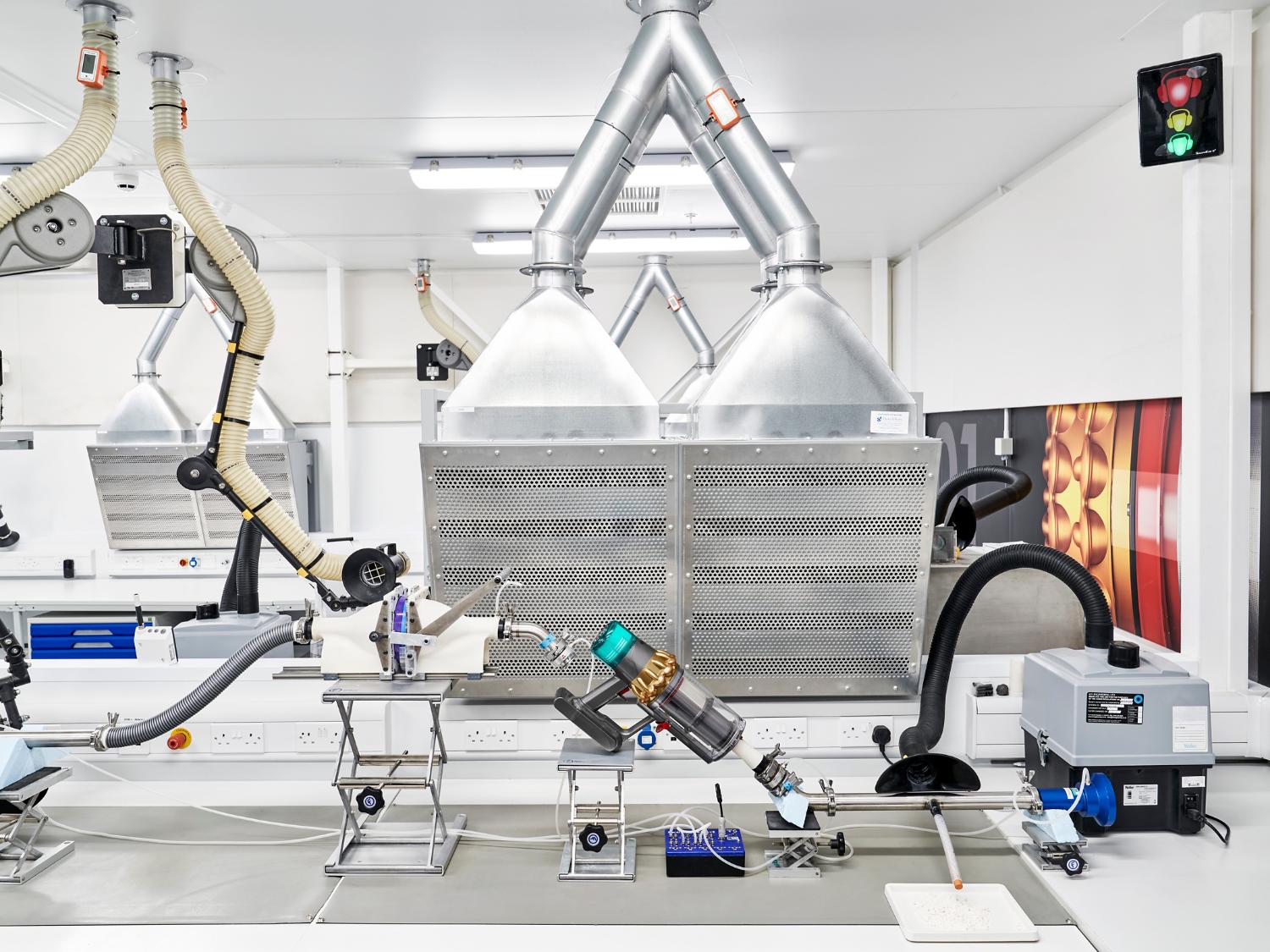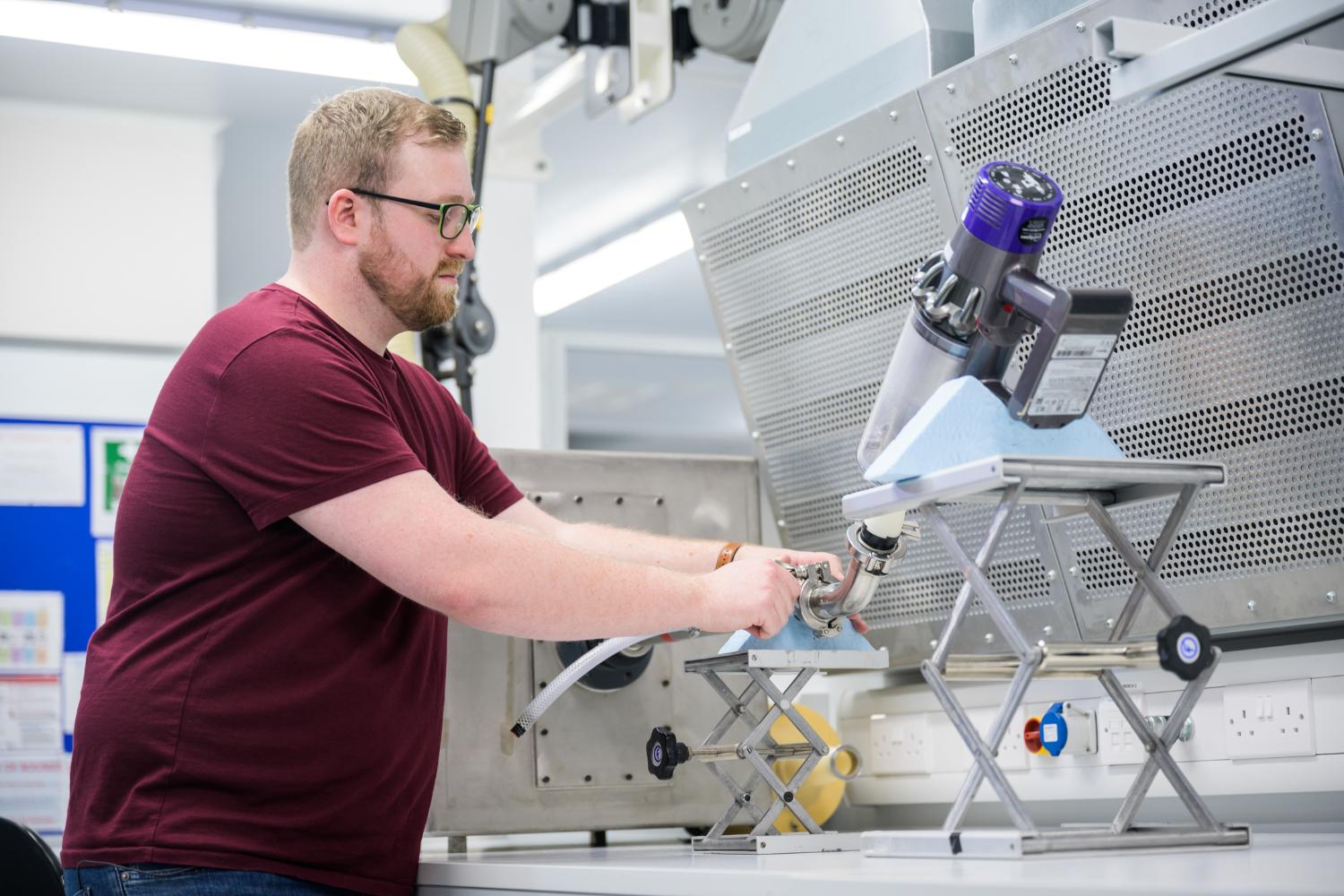

At Dyson, we make it our mission to understand what’s in your dust. In fact, we have dedicated laboratories that analyse the components of household dust and spend millions of dollars each year on dust samples so that we know the machines we make are optimised to pick dust up properly – even the dust you can’t see. But why do we go to such extreme lengths? Our engineers and microbiologists answer questions about why we study dust and share their knowledge on what’s really lurking in your home.
What is household dust?
Household dust is much more complex than the various sized particles used by standard vacuum cleaner tests. Real dust is a complex matrix of components including dust mites, dust mite faeces, bacteria, mould, small insects and particles. Dust mite droppings, dead bodies of dust mites, and small insects are included as allergens. Hidden to the naked eye, they are widely spread on various surfaces of your home including floors, sofas, and beds. A simple action such as sitting on a sofa causes particles to float in the air and can trigger an allergic reaction. Many of these cause components trigger allergies. These allergens are microscopic. The size of dust mite allergen, mould spores and other insect allergens is often between 0.5 to 5 microns. To provide context, the diameter of a human hair is around 50 microns.
Why does Dyson study dust?
Dyson’s microbiology facilities were built almost 18 years ago and as far as we know
we’re the only floorcare manufacturer to have in-house microbiology labs in the world. We wanted to really understand what was in household dust, but couldn’t find the expertise anywhere so decided to build our own lab. Standard tests for assessing vacuum cleaners tend to use particulate matter, meaning just different sizes of similar particles. Our microbiology and household dust lab allow us to investigate the components of real dust and debris found in real homes. By understanding this, we can better enable our vacuum cleaners to deal with the conditions they face in real homes.
Where do you get all of this dust from?
We get it from real homes, mostly collected by employees. We also have a colony of dust mites that we look after and study. Using dust samples collected at home, a Scanning Electron Microscope (SEM) analysis creates images which allow us to identify components of household dust which then informs our product development.
What kind of technology can be used to remove dust and its particulate matter?
We’ve been researching the technology around moving dust and its particulate matter from homes for well over 15 years. UVC light – ultra violet light that is a kind of radiation – is often quoted as a method of destroying dust mites in the right conditions, which is true. However in practice, UVC needs to be applied directly to the thing you’re trying to kill over a long and sustained period of time, which is not the way in which owners use vacuums. Essentially, it’s a misapplication of the
technology. Ionizers are another example of misapplied technology on a vacuum cleaner; in usage, there’s too much air movement and not enough ionizers being produced.
What’s the best way to remove dust and its hidden components?
All of our research has shown us that the best way to remove bacteria, pollen and dust mite allergens is to remove them from your home completely. This is why we focus our efforts on developing vacuums that pick up dust from surfaces, have cyclones that are incredibly efficient and advanced filters and seals that prevent dirty air from being expelled back into the home. We spend a lot of time developing our filters and seals to make sure that we capture not only the dust you can see, but also the dust you can’t. We also want to make sure that the air being expelled from the vacuum is clean – in fact, Dyson machines can capture 99.97% particles as small as 0.3 microns. For context, the diameter of a human hair is around 50 microns.

Jonthan McGaughey, our Separation Systems engineer, tests the filters and seals of our vacuum cleaners to ensure the air expelled from our machines is clean.
Dust facts and figures
- Household dust is made up of a complex matrix of microscopic particles. The size of dust mite allergens, mold spores and other insect allergens is often between 0.5 to 5 microns – one micron is 1% of the diameter of a single hair.
- Dust contains a high percentage of human skin cells. An average person loses around 28g of skin per week, about the weight of a bag of crisps.
- Dust mites feed off human and animal skin flakes, each mite generating around 20 droppings a day.
- 1m2 of carpet can contain up to 1000 dust mites.
- Moving around your home disturbs dust mites and their droppings, which can stay airborne for 30 minutes. In the air, they can be easily inhaled and trigger allergic reactions.
- Dust mites thrive in dark and warm conditions, like mattresses. Beds can contain between 100,000 and more than 1 million dust mites.
- Pet allergies are common, but pet fur often isn’t the problem; the proteins found in pet saliva, urine and dander (dead skin cells) disperse in the form of dust.
- Wearing shoes indoors, you track animal faeces, pollen, fertilizers, motor oil, construction materials, toxic compounds and miscellaneous organisms to every room of the house.
- The health risks to babies from pollutants in household dust may be 100 times greater than for adults. 1
- There are on average more than 2000 distinct types of microbes in our dust. 2
Press contacts
-
Liv Thomas
-
1 Robert, J.W. et al. (2009) Monitoring and reducing exposure of infants to pollutants in house dust, Revue of Environmental Contamination and Toxicology, 201:1-39. Available at: https://www.ncbi.nlm.nih.gov/pubmed/19484587
2 Dunn, R.R. (2013) Home Life: Factors Structuring the Bacterial Diversity Found within and between Homes, PLOS. Available at: https://journals.plos.org/plosone/article?id=10.1371/journal.pone.006413
Barberán, A. et al. (2015) The ecology of microscopic life in household dust, The Royal Society: Biological Sciences. Available at: https://royalsocietypublishing.org/doi/full/10.1098/rspb.2015.1139


